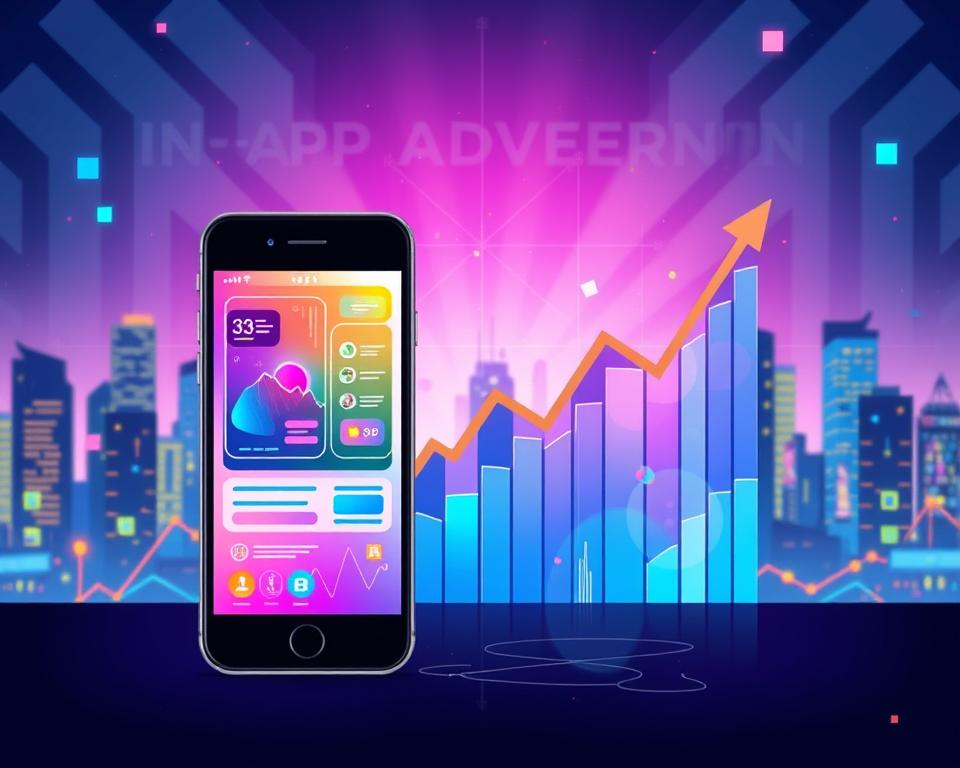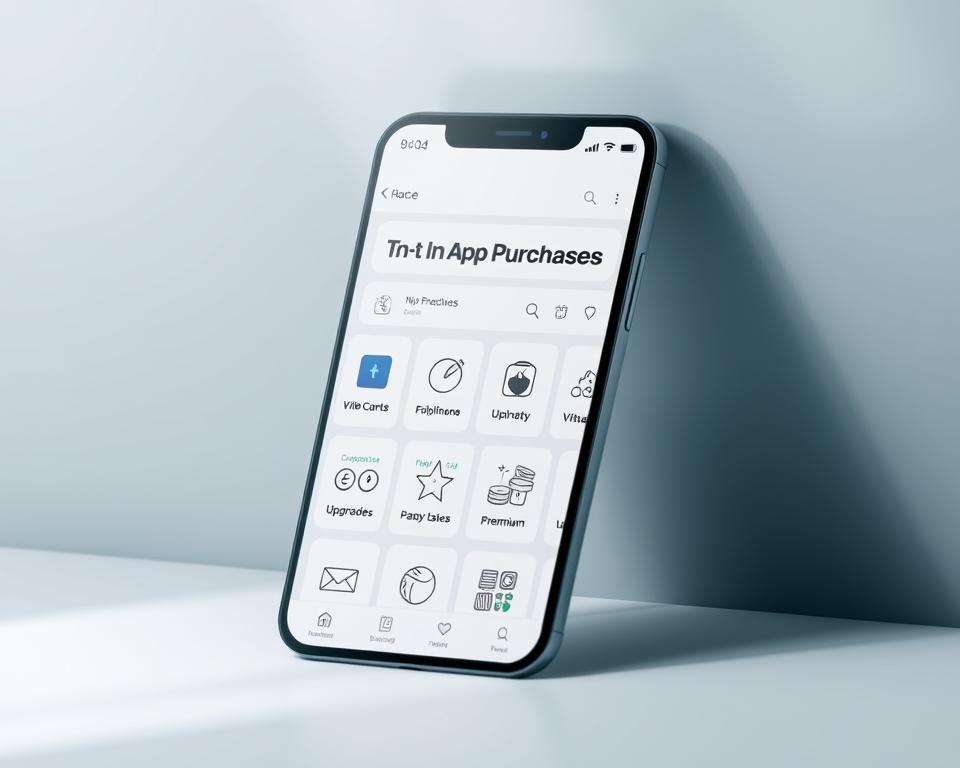Monetizing a mobile app is key to making money from it. Good revenue strategies can greatly impact an app’s success. To find out more, check out mobile app monetization strategies and learn the top ways to make your app profitable.
Creating a solid monetization plan is vital for earning more from mobile apps. By knowing the different ways to make money, developers can build a successful app. Making money from apps involves thinking about who will use it, what it does, and how much you want to earn.
Table of Contents
Key Takeaways
- Mobile app monetization is critical for app success and profitability
- Effective revenue strategies can increase app revenue
- Understanding target audience and app functionality is essential for monetization
- Developing a well-planned monetization strategy is crucial for maximizing revenue
- Mobile app monetization requires careful consideration of several factors
Understanding the Mobile App Monetization Landscape
The mobile app market is always changing, with new trends and tech popping up every year. To do well, it’s key to keep up with the latest in revenue and how to make money. The market is expected to grow, with more apps being sold and more money made from in-app purchases.
With so many apps out there, it’s tough to stand out. Developers must know how to make money and what users want. They need to keep an eye on the latest trends and forecasts in the mobile app world.
- More focus on in-app purchases and subscriptions
- Apps need to be better and more user-friendly
- More ads that are personal and targeted
By understanding these trends and coming up with good ways to make money, developers can earn more and stay ahead. It’s important to watch the revenue trends and adjust your strategy to make the most of your app in the changing mobile app market.
| Trend | Description |
|---|---|
| In-app purchases | Allowing users to buy virtual goods or premium features within the app |
| Subscription-based models | Offering users access to exclusive content or features for a recurring fee |
| Personalized advertising | Using data and analytics to deliver targeted and relevant ads to users |
Essential Factors Before Choosing a Monetization Strategy
Choosing the right app monetization strategy is key. Knowing your target audience is crucial. It helps pick the best revenue models. Also, looking at what competitors do can give you ideas.
Understanding your app’s unique value is also important. It affects which revenue model to use and how successful your app can be.
Some key factors to consider when choosing a monetization strategy include:
- Target audience demographics and preferences
- Competitor analysis and market trends
- App’s unique value proposition and features
- User engagement and retention strategies
By thinking about these, developers can make a good app monetization strategy. This strategy can use in-app ads, freemium models, or subscriptions. It aims to keep users engaged and bring in more money.
A successful app monetization strategy needs to know the audience well. It also needs to understand the app’s unique value and the best ways to make money. By carefully looking at these, developers can make a strategy that meets their goals.
| Monetization Strategy | Description |
|---|---|
| In-app Advertising | Display ads within the app to generate revenue |
| Freemium Model | Offer basic features for free and charge for premium features |
| Subscription-based | Charge users a recurring fee for access to premium content or features |
In-App Advertising: A Comprehensive Revenue Stream
In-app advertising is key for making money from mobile apps. It’s important to know the different ad types and how they affect users. This way, developers can make good money and keep users happy.
Common ad types include banner ads, interstitial ads, native ads, and video ads. Each has its own strengths and weaknesses. For example, banner ads are simple but might not grab attention as much as interstitial ads. Native ads blend in better, while video ads can reward users.
Effective Ad Implementation Strategies
- Balance ad frequency and user engagement to avoid compromising the user experience
- Choose ad formats that align with your app’s content and target audience
- Monitor and optimize ad performance regularly to ensure maximum ad revenue
By using in-app ads wisely, developers can benefit everyone. Users get a smooth experience, and advertisers reach the right people. As apps keep growing, in-app ads will stay a big part of making money, helping developers who focus on user happiness.
Freemium Model Implementation Strategies
Creating a successful freemium model needs careful thought on premium features and conversion rates. By giving away basic app features for free and charging for the premium ones, developers can draw in many users. The goal is to balance free and paid features to make more money.
Some ways to set up a freemium model include:
- Creating premium features that really add value to users
- Improving conversion rates by making upgrades easy and clear
- Telling users clearly what premium features offer
Using a freemium model can boost revenue and keep users engaged. Conversion rates can be better with special discounts or easy upgrades. Also, tracking user behavior with data can help improve the model.
In summary, a well-thought-out freemium model can help make money from a mobile app. By using these strategies, developers can earn more and make users happier.
By sticking to these strategies and always looking to improve, developers can make a successful and profitable mobile app.
| Freemium Model Strategies | Benefits |
|---|---|
| Offering compelling premium features | Increased revenue and user engagement |
| Optimizing conversion rates | Improved user satisfaction and revenue |
| Managing user expectations | Clear communication of premium feature benefits |
How to Monetize Your Mobile App Through Premium Features
Monetizing a mobile app through premium features is a direct and effective way to generate revenue. By offering users exclusive content or functionality, developers can create a clear value proposition. This justifies the cost of premium features. It’s essential to develop a well-planned monetization strategy that balances user experience with revenue goals.
A key aspect of premium feature monetization is feature gating. This involves restricting access to certain features or content for non-paying users. Techniques include:
- Limiting the number of features or content available to free users
- Implementing time-based restrictions, such as free trials or limited-time access
- Offering exclusive content or features to paying users
When developing a pricing strategy for premium features, it’s crucial to consider the user experience. The cost should be justified by the value provided. This can be achieved by optimizing the user experience and providing clear information about premium features.
Ultimately, the key to successful premium feature monetization is to strike a balance between revenue goals and user experience. By offering valuable and exclusive content, and providing a seamless and intuitive user experience, developers can create a winning strategy. This drives revenue and user engagement.
| Premium Feature | Monetization Strategy | User Experience |
|---|---|---|
| Exclusive Content | Subscription-based | Seamless and intuitive |
| Ad-free Experience | One-time payment | Improved user experience |
| Priority Support | Freemium model | Enhanced customer support |
Subscription-Based Revenue Models
Subscription models offer a steady income for mobile app developers. They provide predictable income and boost customer retention. By giving users ongoing value, developers can get more recurring revenue.
To make a subscription model work, developers need to think about pricing and updates. A good plan can grow revenue and keep users loyal. Some top strategies include:
- Exclusive content or features for subscribers
- Regular updates and new releases
- Tiered pricing for different user needs
Subscription models help developers build a lasting, profitable business. They focus on customer retention and recurring revenue. As the app market grows, using subscription models is key to success.
But, there are challenges like keeping users interested and seeing value. With the right planning, subscription models can be very effective. They help generate recurring revenue and support long-term growth.
Understanding what makes a subscription model successful is crucial. Developers can then create a strong, profitable revenue stream. This focuses on subscription models and customer retention.
In-App Purchases: Maximizing Transaction Value
In-app purchases are key for many mobile apps, especially in gaming and productivity. To boost transaction value, understanding user behavior is crucial. By analyzing user data, developers can find ways to offer in-app purchases that meet user needs and increase average transaction value.
A good pricing strategy is essential to encourage in-app purchases. Prices should be competitive, clear, and fair. Offering discounts, promotions, or bundles can also encourage users to buy more, raising the transaction value.
Virtual Goods Strategy
Virtual goods, like in-game currency or premium items, can be a big revenue source. To increase transaction value, developers should create a virtual goods strategy with various options. This includes both affordable and high-end items.
Consumable vs. Non-Consumable Items
Developers should think about the types of items for in-app purchases. Consumable items, like in-game currency or boosts, can be bought and used many times. Non-consumable items, such as premium features or exclusive content, are bought once but offer ongoing value. Offering both can boost average transaction value and encourage repeat purchases.
Pricing Psychology
Pricing psychology greatly affects user purchasing decisions. Developers can use anchoring, scarcity, and social proof to create a pricing strategy that encourages bigger purchases. By understanding how users see prices and value, developers can improve their in-app purchase options to increase transaction value.
| In-App Purchase Type | Average Transaction Value |
|---|---|
| Virtual Goods | $5.00 |
| Consumable Items | $2.50 |
| Non-Consumable Items | $10.00 |
Sponsorship and Partnership Opportunities
Mobile apps can gain a lot from sponsorships and partnerships. These can boost revenue, improve user experience, and increase brand visibility. By teaming up with brands, app developers can make the app better for everyone involved.
App developers should look for partners that match their app’s values and audience. This means doing research and analysis on who uses the app. Knowing the audience helps find partners that add value to users.
Structuring Partnership Deals
Creating partnership deals needs careful thought. It’s about sharing revenue, integrating brands well, and keeping users happy. Developers should aim for deals that help both sides. Key points include:
- Revenue sharing models, like cost-per-click or cost-per-install
- Brand integration strategies, like native advertising or sponsored content
- Improving user experience with exclusive rewards or premium features
By making deals that work for both, developers can open new revenue paths and improve the app. This is done through brand integration, making partner brands part of the app smoothly.
Sponsorships and partnerships are great for making money from a mobile app. They offer many benefits that can help an app grow and earn more. By understanding the key points and making deals that help both sides, developers can create successful partnerships. These partnerships can make the app better for users and help the business succeed.
| Partnership Type | Benefits | Challenges |
|---|---|---|
| Sponsorship | Increased revenue, brand exposure | Integration challenges, user experience impact |
| Partnerships | Enhanced user experience, new revenue streams | Revenue sharing, brand alignment |
| Brand Integration | Seamless brand experience, increased engagement | Technical challenges, user acceptance |
Data Monetization: Ethical Approaches and Best Practices
Mobile app developers must focus on user privacy and ethical practices when exploring data monetization. It’s important to be open with users about the data collected and its use. This builds trust and keeps a good reputation.
Important points for data monetization include:
- Following data protection laws
- Letting users control their data
- Being clear about data use
It’s key to find a balance between data monetization and user privacy. This can be done by using ethical practices like anonymizing data and getting consent. This way, developers can benefit their business while respecting users.
In the end, data monetization should respect user privacy and follow ethical practices. This approach helps developers build a lasting and profitable business that values both their company and users.
Hybrid Monetization Strategies for Maximum Revenue
Hybrid monetization mixes different ways to make money. This method helps app makers earn from various sources, not just one. By using hybrid monetization, they can keep users interested and boost earnings.
A good hybrid monetization plan balances user experience with different money-making methods. For example, it might use ads and in-app buys together. This way, the app stays high quality while making money.
Benefits of Hybrid Monetization
- Diversified revenue streams
- Reduced dependence on a single revenue stream
- Enhanced user engagement
- Increased overall revenue
When using hybrid monetization, think about how it affects user experience. A smart mix of revenue streams leads to better results. This approach helps developers make more money and keep users happy.
Revenue Stream Integration
Good revenue stream integration is key to hybrid monetization success. By blending different ways to make money, developers can offer a smooth experience. A well-thought-out hybrid strategy can increase earnings and keep users coming back, leading to lasting success.
Analytics and Performance Tracking
Knowing how to use analytics and track performance is key for boosting revenue optimization in mobile apps. Analytics tools help developers understand user behavior. They spot areas for betterment and make choices based on data to improve earnings.
Important parts of tracking performance include:
- Watching how users engage and stay with the app
- Tracking money made and finding ways to grow it
- Looking at what users say and feel
By using good performance tracking and analytics, developers can make more money from their apps. This also makes the app better for users. It helps them stay ahead in the market.
Popular analytics tools for mobile apps are Google Analytics, Firebase Analytics, and Flurry Analytics. These tools offer many features, such as:
- Tracking data in real-time
- Customizable dashboards and reports
- Working with other tools and platforms
Common Monetization Pitfalls to Avoid
When making a plan to make money from a mobile app, knowing common mistakes is key. A good plan can make users happy, which is why avoiding mistakes is important.
Choosing the right pricing strategy is crucial. Prices that are too high or too low can hurt your earnings or upset users. Also, ignoring user experience can lead to bad reviews and less app use.
User Experience Issues
- Cluttered or confusing interfaces
- Intrusive ads or notifications
- Difficulty navigating the app
Pricing Mistakes
Getting the price wrong can harm your app’s success. Knowing what users are willing to pay is essential. A pricing strategy that’s too high can scare users off, while one that’s too low can cost you money.
Technical Implementation Errors
Technical problems can also hurt your app’s money-making plans. Bugs or poor performance can make users leave. It’s important to test your app well to ensure a smooth experience.
Knowing these common monetization pitfalls and avoiding them can help developers succeed. A good plan can make users happy and increase earnings.
Legal Considerations and Compliance
When it comes to making money from mobile apps, legal considerations are key. Developers must follow laws and rules, especially about data protection. Not following these can lead to big fines and harm the app’s image.
To stay compliant, developers should take a few steps:
- Use strong data protection, like encryption and safe storage
- Get users’ okay for collecting and using their data
- Be clear and open about how data is used and shared
By focusing on legal considerations and compliance, developers can avoid legal trouble. This builds trust and loyalty with users. It also helps increase revenue and growth.
Keeping up with new data protection and compliance rules is crucial. It ensures the app’s success in the long run.
| Regulation | Description |
|---|---|
| GDPR | General Data Protection Regulation, a European Union regulation on data protection and privacy |
| CCPA | California Consumer Privacy Act, a California state law on data protection and privacy |
Future Trends in Mobile App Monetization
The world of mobile app money-making is always changing. Emerging technologies and market changes will shape future earnings. Looking ahead, understanding future trends is key.
Watch for the rise of artificial intelligence, augmented reality, and blockchain. These emerging technologies could change how apps make money. They offer new ways to earn.
Predicted Market Changes
We’ll see more personalized and interactive apps soon. This might include using data analytics and machine learning. It will make ads and offers more relevant, boosting both user interest and earnings.
As the industry grows, developers must keep up. Adapting to future trends and market changes is vital. This way, their apps can stay competitive and profitable.
Emerging Technologies
Some exciting emerging technologies to look out for are:
- Artificial intelligence
- Augmented reality
- Blockchain technology
These technologies could greatly impact how apps make money. They promise new and creative ways to earn.
Conclusion
Mobile app monetization is a complex task. It needs careful thought about how to make money and what’s coming next. By knowing the market and picking the right way to make money, developers can earn a lot. Success comes from always improving and changing with user needs and market shifts.
As mobile apps keep changing, it’s key to stay up-to-date. Using data and analytics helps developers make better money plans and improve user experience. This leads to growth and profit over time. Making money from mobile apps is an ongoing effort that needs focus, creativity, and understanding of the audience.
By adopting this approach and trying new ways to make money, developers can handle the challenges of mobile app monetization. They can reach their goals in this fast-changing world, using the latest strategies and revenue streams.



















